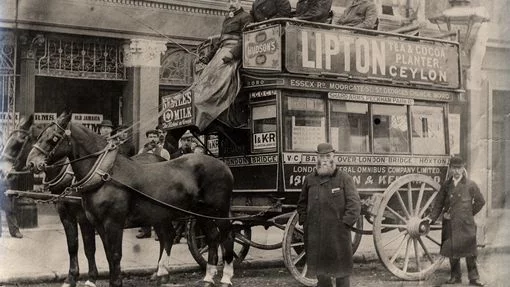
19th Century London and Victorian Transport
Content
London in the 1800s was a compact city where most people worked within walking distance of home. The narrow winding streets were often crowded with people, horses and carts,with only wealthy people able to travel by private carriage.
With only two bridges crossing it, the River Thames itself was a convenient way of getting around. Watermen carried people in small rowing boats called wherries. These were eventually displaced by paddle steamers which, by the 1850s, were carrying several million passengers a year.
Two new vehicles from Paris changed the traffic on London’s streets: the cabriolet and the omnibus. Light, horse-drawn cabs, which were small enough to fit on London’s maze of streets, became fashionable among rich Londoners. Meanwhile, English coachbuilder George Shillibeer launched London’s first ‘hail and ride’ bus service in 1829. Though still beyond the means of most Londoners, services were popular with middle class commuters, and soon there were hundreds of horse buses on the streets.
After a false start in 1861, horse trams on rails in the road started to appear from 1870. They were larger and cheaper to run than buses, giving working-class Londoners their first access to affordable public transport.
Railways too played their part in shaping London’s development. The railway boom of the 1830s and 1840s saw routes reach London from every direction. Barred from the central area, railway stations and depots formed a circle round the heart of London.
Discover more Victorian transport on the second floor of London Transport Museum.
Read more...
London’s population was about 1.7 million when Queen Victoria was crowned in 1837. Mainline railways in the 1840s and 1850s brought even more people into the Capital. Traffic congestion was reaching crisis point and radical solutions were needed. Read more about public transport in Victorian London – underground
During Queen Victoria's reign (1837-1901), London's population grew at an astonishing rate. London’s centre became increasingly congested. Read more about public transport in Victorian London – on the surface.
At the start of the nineteenth century there were no buses or railways in London. The city was compact, and its narrow streets crowded. Learn how George Shillibeer, a coachbuilder and stable keeper and the London General Omnibus Company shaped London’s horse bus era.
Must-see objects
More from the Museum Guide
In 1860, work began on the world's first underground railway - the Metropolitan line. See the only surviving 1860s steam engine in the Museum.
London’s population grew rapidly in the 19th century as the railways and the underground began to expand out, reaching villages like Brixton, and further out into new 'Metro-land', creating the first suburbs.
Construction on early underground lines was expensive and chaotic. Explore how the Greathead shield made digging deep tunnels much easier and helped build the world's first electric railway.










